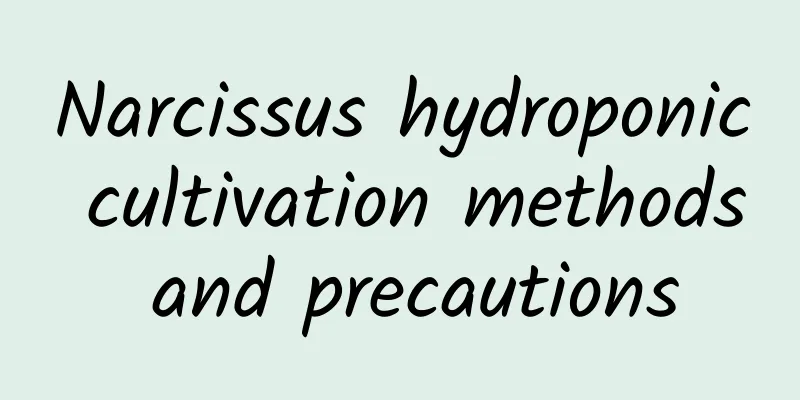When does papaya ripen and go on sale?

|
Papaya is one of the fruit varieties introduced from abroad and is also a tropical fruit . It has high nutritional value, is rich in vitamin C and vitamin A, tastes very good, and many people like to eat it. So when does papaya mature and go on the market? Let’s take a look below. 1. When does papaya mature and go on the market? Papaya flowers are pink, the fruits are dark yellow, have a certain fragrance, and mature from September to October. Papaya, also known as longevity fruit, papaya, stone melon, milk melon, fluffy fruit, and longevity, is an evergreen softwood small tree of the genus Carica papaya. The ripe papaya fruit can be eaten as fruit, and the unripe fruit can be pickled or cooked as vegetables. It can also be processed into candied fruit, jam, juice, canned food and preserved fruit. 2. Key points of papaya planting technology 1. Soil selection: Papaya prefers a warm and humid environment. The soil suitable for its growth is well-drained, loose, and humus-rich soil. 2. Planting season: The papaya planting season is generally in spring, starting after the rainy season ends. It can also be planted in late autumn or early spring. 3. Seedling cultivation: There are two ways to cultivate papaya seedlings, one is sowing and the other is grafting. When sowing, you should choose healthy seeds that are free of pests and diseases, soak the seeds for 24 hours, and then sow them. When grafting, choose scions and rootstocks that are free of pests and diseases, and use appropriate grafting methods. 4. Planting spacing: When planting papaya, you should pay attention to controlling the appropriate plant spacing and row spacing. Generally, the plant spacing is controlled at 2 to 3 meters, and the row spacing is controlled at 2 to 3 meters. 5. Fertilization: Papaya requires an appropriate amount of nutrients during its growth period, and regular topdressing can be adopted. Applying organic fertilizers can improve soil fertility and keep soil moist. 3. Common diseases and pests of papaya and their prevention and control methods 1. Disease prevention and control (1) Rust disease: Rust inhibitors should be sprayed regularly, such as Bordeaux mixture, to prevent rust. At the same time, timely measures such as cutting and burning of diseased trees should be taken. (2) Scab: Scab mainly occurs on fruits. Disease- and insect-free seedlings should be selected for cultivation, and nursery management should be strengthened to improve the disease resistance of the plants. 2. Pest control (1) Scale mites: Scale mites harm tree leaves and can be effectively controlled by spraying pesticides . At the same time, pay attention to reducing overly dense plants and increasing crown ventilation. (2) Aphids: Aphids mostly gather on flower buds and young leaves. To prevent and control aphids, you can spray pesticides containing indomethrin insecticides. Through correct planting techniques and scientific and reasonable pest and disease control measures, the yield and quality of papaya can be improved to meet market demand and bring rich economic benefits.
|
<<: How to grow catharanthus in winter? Can it be propagated by cuttings?
>>: How to care for the fragrant vine in winter? Can I change the pot?
Recommend
The difference between tangerines and oranges
1. Differences in leaves The leaves of mandarin o...
How to save bitter melon seeds
How do bitter melon seeds come from? Bitter melon...
How to grow purple calyx spur
1. Flower soil This type of plant is afraid of wa...
The efficacy and function of red pepper
1. Aid digestion Eating red peppers can stimulate...
Sugar beet growing conditions and characteristics
Beet growing conditions Beet is suitable for grow...
How to care for potted roses in winter
Are potted roses afraid of freezing? Potted roses...
How many times a year can broccoli be planted and how long does it take to harvest?
How many times a year can broccoli be grown? Broc...
How to grow succulents for beginners
1. Choose the right flower pot The first step for...
Keep a pot of "it" at home, it can relieve heat and moisten your throat. Put a pot of it in the toilet and all the odors will go away!
Speaking of air, in fact, we can not only grow pl...
When is the best time to plant outdoor watermelons?
The best time to plant watermelons outdoors Open-...
What flowers are suitable for growing in Jingdezhen? What are the city flowers and trees?
1. Climate characteristics of Jingdezhen Jingdezh...
What is cauliflower?
What is cauliflower? Cauliflower belongs to the C...
Cultivation methods and precautions of bamboo cypress
1. Breeding methods 1. Soil: It prefers to grow i...
Growing "green radish" like this will make it grow into a "small mechanism" and its leaves will be lush like a waterfall
What Huahua wants to talk to you about today is t...
Watering method of bicolor jasmine
Watering tips Quantity requirements The origin of...









